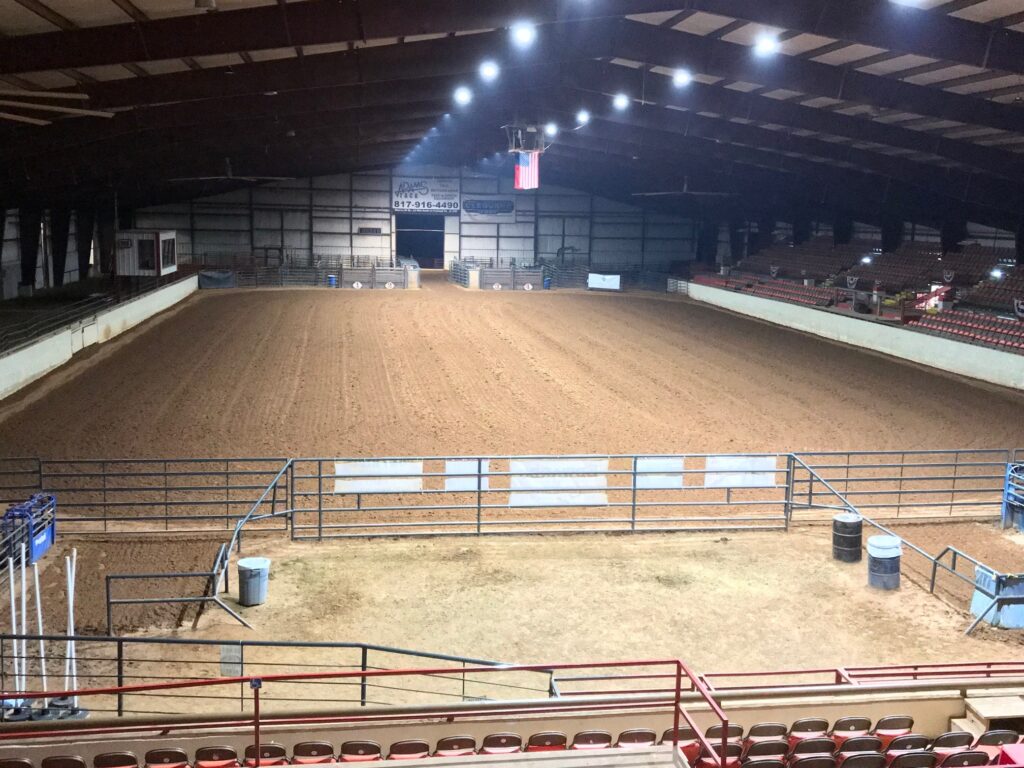If you are the owner of a riding arena, then it is important to keep up with proper surface care and maintenance. A well-maintained riding arena floor will ensure that all horses and riders stay safe while they are performing their tricks and maneuvers. In this article, we will discuss the basics of maintaining an arena surface.
Keeping your arena safe for horses and riders
If you’re a horse owner, you know that riding arenas are an important part of horse care. Not only do they provide a space for exercise and training, but they also offer a safe place to ride. However, arenas can also be dangerous if they’re not properly maintained. Rough surfaces can cause falls, and protruding objects can injure both riders and horses. That’s why it’s so important to regularly check and maintain the surface of your arena. Look for any potential hazards and repair them right away. By taking care of your riding arena, you can help to keep both you and your horses safe.

What are arena dragging and grooming?
Most riding arenas are made of dirt, which can become packed down over time, making it difficult for horse hooves to gain traction. In order to keep the arena surface loose and level, arena dragging is a necessary part of arena maintenance. Arena draggers come in a variety of sizes and designs, but the basic principle is the same: a heavy metal frame is pulled across the arena surface, breaking up any compacted areas and leveling out any uneven spots. Grooming an arena after dragging is also important, as it helps to remove any remaining debris and create a smooth, level surface. With regular dragging and grooming, riding arenas can provide a safe and enjoyable riding experience for both horses and riders.
How often should an arena be dragged?
Riding arenas need to be dragged on a regular basis. But how often should you drag your arena? It depends on a few factors, including how often you ride and the type of footing you have. For example, if you have a sandy footing, you’ll need to drag more often than if you have a grassy footing. In general, riding arenas should be dragged at least once a week, and more often (maybe daily) if they’re being used a lot. This will help to keep the footing in good condition and prevent build-up of debris.
What effect does dragging have?
Many riding arenas are dragged on a regular basis in order to keep the sand or other footing material level. This process can have a number of positive effects on the riding surface:
- It can help to prevent the formation of ruts and other irregularities.
- Dragging also helps to distribute any divots or footprints that may have been left behind, creating a more even and consistent surface.
- Dragging can help to improve drainage by ensuring that water doesn’t pool in low-lying areas.
As a result, regular dragging can help to create a safer and more enjoyable riding experience for both horse and rider.
Use water for the best surface
A riding arena surface is only as good as the water used to maintain it. Water helps to keep dust and other particles from becoming airborne, and it also helps to settle the footing material by binding everything together. Not watering can cause the surface to become loose and ‘slippery’. So, to maintain good grip and stabilization, be sure to water as often as needed. Just be careful not to water too much.

Use the Lucas Ground Hog for the best results
Looking for the rodeo arena groomer trusted by the likes of the National Finals Rodeo? Your search is over. The Ground Hog enables arena owners and rodeo event dirt crews to not only rework the surface with hydraulically operated ripper shanks but also fill in those holes to ensure the safety of performance horses and livestock. This is accomplished with double grader blades, evenly distributing the dirt throughout the arena, allowing the pegged finishing roller to flawlessly compact and finish the ground safely for the horse and rider.
Don’t trust just anything you can drag or equipment not intended for dirt work
Having the right grooming equipment is an important part of maintaining your arena’s performance. Chain drags, or drags with just straight teeth, cannot properly mix arena sand. These older types of tools have their place for other applications, but arena dragging is not one of them.
The time and effort it took using other tools such as rakes, harrows, discs, plows, and other methods of arena grooming were not efficient. When dealing with speed horses the footing is of the essence to keep the horse sound and to achieve the best performance. The Ground Hog provides the most versatile tool for speed horses, rodeo producers, rodeo associations, and arena owners.
Designed by an arena owner and father and grandfather of nationally renowned barrel racers, the Ground Hog was designed in 1996, to provide a total solution for arena grooming with one tool that would produce one consistent result every drag, with just one pass.
Contact us today for more information about our world-class arena drag or about becoming a Ground Hog dealer.
